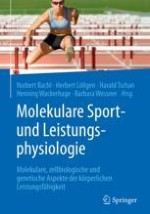2018 | OriginalPaper | Buchkapitel
13. Stoffwechselprinzipien der Ernährung
verfasst von : Petra Stuparits, Erich Roth, Karl-Heinz Wagner
Erschienen in: Molekulare Sport- und Leistungsphysiologie
Verlag: Springer Vienna
2018 | OriginalPaper | Buchkapitel
verfasst von : Petra Stuparits, Erich Roth, Karl-Heinz Wagner
Erschienen in: Molekulare Sport- und Leistungsphysiologie
Verlag: Springer Vienna
Print ISBN: 978-3-7091-1590-9
Electronic ISBN: 978-3-7091-1591-6
Copyright-Jahr: 2018
